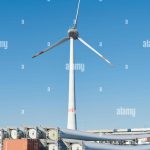Wind Power Equipment Storage Yard Transport: The Nitty-Gritty

As you and me know, wind power is becoming a huge player in the renewable energy game. With more and more wind farms popping up all over the world, the need for efficient and safe transportation of wind power equipment is becoming increasingly important. That’s where wind power equipment storage yard transport comes in – the unsung hero of the wind industry.
What is Wind Power Equipment Storage Yard Transport?
Wind power equipment storage yard transport refers to the process of moving wind turbines and other related equipment from a storage yard to a construction site or from one location to another. This can include transporting massive components like blades, towers, and nacelles (the brains of the wind turbine). It’s a complex process that requires careful planning, specialized equipment, and a team of experts who know their stuff.
Types of Wind Power Equipment Storage Yard Transport
There are several types of wind power equipment storage yard transport, including:
Road Transport
This is the most common method of transporting wind power equipment. It involves loading the equipment onto specialized trucks and trailers and hauling it to the destination. Road transport is relatively straightforward, but it can be affected by weather conditions, road closures, and other factors that can impact the delivery timeline.
Rail Transport
For larger wind farms or those located in remote areas, rail transport may be a better option. This involves loading the equipment onto railcars and transporting it to the destination by train. Rail transport can be more efficient than road transport, but it requires a significant investment in railcar infrastructure.
Sea Transport
For wind farms located near the coast or on islands, sea transport may be the most viable option. This involves loading the equipment onto ships and transporting it to the destination by sea. Sea transport can be more expensive than other methods, but it can also be more efficient for large, heavy components.
Challenges of Wind Power Equipment Storage Yard Transport
Wind power equipment storage yard transport is not without its challenges. Here are some of the most common issues that logistics providers and wind farm operators face:
Size and Weight
Wind turbine components are massive and heavy, making them difficult to transport. Blades, for example, can be up to 80 meters long and weigh several tons. This requires specialized equipment and careful planning to ensure safe transportation.
Dimensional Constraints
Wind turbine components often have dimensional constraints that make them difficult to transport. For example, blades may need to be transported in a specific orientation to prevent damage.
Weather Conditions
Weather conditions like strong winds, rain, and extreme temperatures can impact the transportation process. This can cause delays and even damage to the equipment.
Infrastructure Constraints
Transporting wind power equipment often requires significant investment in infrastructure, including roads, bridges, and railcar infrastructure. This can be a challenge for wind farm operators and logistics providers.
Best Practices for Wind Power Equipment Storage Yard Transport
To overcome the challenges of wind power equipment storage yard transport, logistics providers and wind farm operators need to have a solid plan in place. Here are some best practices to follow:
Plan Ahead
Planning ahead is key to successful wind power equipment storage yard transport. This includes identifying potential transportation routes, assessing infrastructure constraints, and developing contingency plans for unexpected delays or damage.
Use Specialized Equipment
Wind turbine components require specialized equipment to transport safely. This includes custom-built trailers and cradles that can accommodate the size and weight of the components.
Train Drivers and Crews
Drivers and crews need to be trained to handle wind turbine components safely. This includes training on how to load and unload the components, as well as how to navigate challenging terrain.
Monitor Weather Conditions
Logistics providers and wind farm operators need to monitor weather conditions closely to ensure safe transportation. This includes checking for strong winds, rain, and extreme temperatures that could impact the transportation process.
The Future of Wind Power Equipment Storage Yard Transport
As the wind industry continues to grow, the demand for efficient and safe wind power equipment storage yard transport will only increase. To meet this demand, logistics providers and wind farm operators need to invest in technology and innovation.
Digitalization
Digitalization is key to improving the efficiency of wind power equipment storage yard transport. This includes using data analytics to optimize transportation routes and schedules, as well as implementing digital tools to track and monitor the transportation process.
Automation
Automation can play a significant role in improving the safety and efficiency of wind power equipment storage yard transport. This includes using automated cranes and loaders to reduce manual handling and minimize the risk of damage.
Conclusion
Wind power equipment storage yard transport is a critical component of the wind industry. To ensure safe and efficient transportation of wind turbine components, logistics providers and wind farm operators need to have a solid plan in place, use specialized equipment, and train drivers and crews. By investing in technology and innovation, the wind industry can continue to grow and thrive, while minimizing the risks associated with wind power equipment storage yard transport.
Wind Power Equipment Storage Yard Transport: The Way Forward
As the wind industry continues to evolve, the need for efficient and safe wind power equipment storage yard transport will only increase. By working together and investing in technology and innovation, logistics providers and wind farm operators can ensure a bright future for wind power equipment storage yard transport.
<